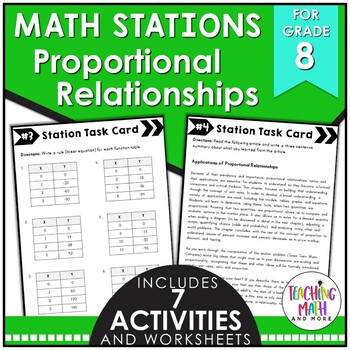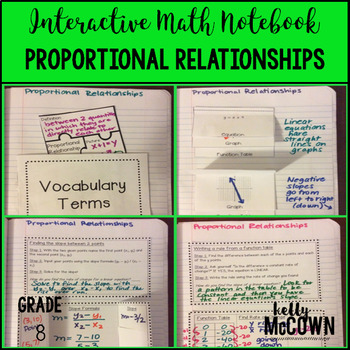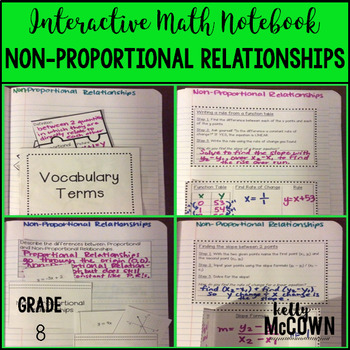
Click HERE for Proportional Math Stations {Grade 8}
This math station activity is intended to help students understand how to graph proportional relationships, interpret the unit rate as the slope, compare two different proportional relationships, compare properties of two functions, and construct a function to model a linear relationship and determine the rate of change.
Included are:
-6 different stations to engage students
-Teacher facilitated activity for 60-90 minutes of classroom time
-Stations include:
1. Vocabulary
2. Technology (Need classroom computers & internet access to ixl.com)
3. Practice of Proportional Relationships
4. Additional Practice of Proportional Relationships
5. Real World applications of Proportional Relationships
6. Word problems of Proportional Relationships
-Student Station Guide helps students record their answers
-ALL ANSWER KEYS included

Click HERE for Non-Proportional Math Stations {Grade 8}
This math station activity is intended to help students understand how to explain why the slope is the same between any two distinct points, compare properties of two functions, interpret equations as proportional or non-proportional, and construct a function to model a linear relationship.Included are:
-6 different stations to engage students
-Teacher facilitated activity for 60-90 minutes of classroom time
-Stations include:
1. Vocabulary
2. Technology (Need classroom computers & internet access to ixl.com)
3. Practice of Non-Proportional Relationships
4. Additional Practice of Non-Proportional Relationships
5. Real World applications of Non-Proportional Relationships
6. Word problems of Non-Proportional Relationships
-Student Station Guide helps students record their answers
-ALL ANSWER KEYS included

Click HERE for Proportional Interactive Math Notebook Activities {Grade 8}
These interactive notebook activities are intended to help students understand how to graph proportional relationships, interpret the unit rate as the slope, compare two different proportional relationships, compare properties of two functions, and construct a function to model a linear relationship and determine the rate of change.
Included are:
-4 different Proportional Relationships activities to engage students
-Teacher facilitated activity for 60-90 minutes of classroom time
-Activities include: Vocabulary, Writing a rule (linear equation) from a function with a proportional relationship, Finding the slope between two points, and Writing a function table and drawing a graph from a linear equation.
-Examples of Completed Interactive Math Notebook Activities are included

Click HERE for Non-Proportional Interactive Math Notebook Activities {Grade 8}
These interactive notebook activities are intended to help students understand how to explain why the slope is the same between any two distinct points, compare properties of two functions, interpret equations as proportional or non-proportional, and construct a function to model a linear relationship.Included are:
-4 different Non-Proportional Relationships activities to engage students
-Teacher facilitated activity for 60-90 minutes of classroom time
-Activities include: Vocabulary, Writing a rule (linear equation) from a function with a proportional relationship and non-proportional relationship, Finding the slope between two points, and discovering the differences between non-proportional and proportional relationships.
-Examples of Completed Interactive Math Notebook Activities are included
I hope these help give you some ideas into developing lessons for Proportional & Non-Proportional Relationships. It's important to note the differences using compare & contrast, summarizing with notes, and engaging activities that drive conceptual learning. Go & Make Math Engaging!
